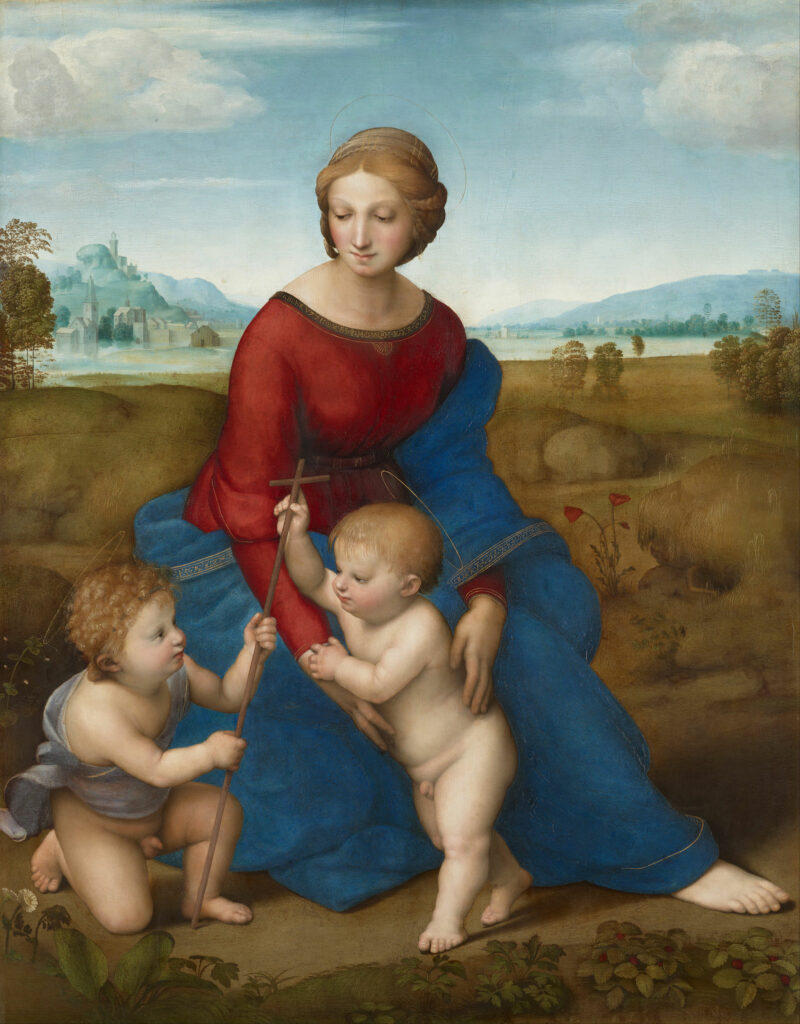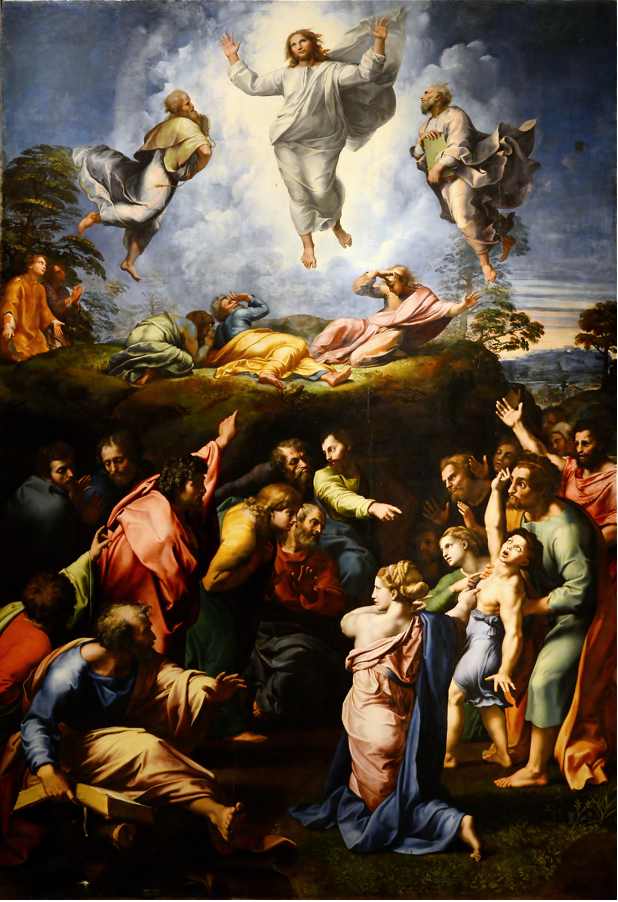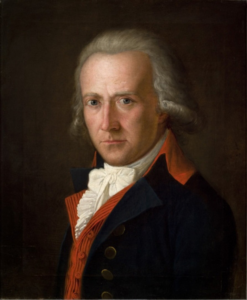The praying woman
(Poet's title: Die Betende 1778)
Set by Schubert:
D 102
[autumn 1814]
Laura betet! Engelharfen hallen
Frieden Gottes in ihr krankes Herz!
Und wie Abels Opferdüfte wallen
Ihre Seufzer himmelwärts.
Wie sie kniet, in Andacht hingegossen,
Schön, wie Raphael die Unschuld malt,
Vom Verklärungsglanze schon umflossen,
Der um Himmelswohner strahlt.
O sie fühlt, im leisen, linden Wehen
Froh des Hocherhabnen Gegenwart,
Sieht im Geiste schon die Palmenhöhen,
Wo der Lichtkranz ihrer harrt.
So von Andacht, so von Gottvertrauen
Ihre engelreine Brust geschwellt,
Betend diese Heilige zu schauen,
Ist ein Blick in jene Welt.
Laura is praying! Angel harps echo
God’s peace in her sick heart,
And, rising like the scent of Abel’s sacrifice,
Her sighs ascend towards heaven.
How she kneels, throwing herself into devotion,
Beautiful, as Raphael paints innocence,
Already surrounded by the light of transfiguration
Which shines around those who live in Heaven.
Oh, in the quiet, gentle sighs she feels
The joy of the elevated presence;
She can already see in spirit the tops of the palms
Where the halo is waiting for her!
Thus, as devotion and trust in God
Swell her angel-pure breast,
Watching this saint pray
Is a glimpse into that world.
All translations into English that appear on this website, unless otherwise stated, are by Malcolm Wren. You are free to use them on condition that you acknowledge Malcolm Wren as the translator and schubertsong.uk as the source. Unless otherwise stated, the comments and essays that appear after the texts and translations are by Malcolm Wren and are © Copyright.
☙
Themes and images in this text:
Angels Chest / breast Echo Gazes, glimpses and glances Harps and Aeolian harps Hearts Heaven, the sky Light Pictures and paintings Prayers and praying
The poet catches sight of Laura at prayer and the resulting poem interprets the experience as a glimpse into another world. This is both the world beyond, the world of the divine which suffuses and transfigures her, but also (perhaps more interestingly), the world within. The vision allows the poet to see into her soul, with both its pain and purity.
‘An outward and visible sign of an inward and spiritual grace’ is one of the standard (Anglican) definitions of the sacraments, but it could also apply to the use of imagery in general in this text. In the first stanza there is an ‘image’ of Laura’s inner state (angelic harps echoing God’s peace in her sick heart) and a ‘simile’ attempting to portray the effect of her prayer (it rises like the scent of Abel’s sacrifice, on which God looked favourably, unlike that of his brother Cain, Genesis 4).

Vienna, Kunsthistorisches Museum
The second stanza is based on an explicit reference to physical images: paintings by Raphael. However, the point is not that Laura looks like a Raphael Madonna but that she is illuminated by the same spiritual light that allowed Raphael to paint innocence itself. Abstract nouns are not easy to paint, but paint was his medium, just as words were Matthisson’s. In depicting the external appearance of the models of his Madonnas Raphael managed to capture an inner radiance that enables the viewer to relate to the image on a spiritual level; she is seen in another light. This is connected with the moment of transfiguration in the Gospels (Matthew 17:1-9, Mark 9:2-10, Luke 9:28-36) when three disciples caught a glimpse of Jesus communing with Moses and Elijah (‘those who live in heaven’). Matthisson may have seen Raphael’s great painting of the Transfiguration (it is now in the Vatican[1]) on his travels.

Rome, Vatican Museums
The transforming light allows the poet to enter Laura’s perceptual world and describe what her ‘spirit’ experiences. Stanza three is a third person account of another mind’s consciousness. Matthisson tries to report the joy and comfort that emerges from her inner torment and the growing awareness of the world of the saved. At this point the poet has to resort to the comparatively crude symbols used in Christian art to suggest (certainly not to depict) holiness: the palm, which is traditionally a symbol of the saints who entered heaven via martyrdom; and the halo (usually only the thinnest of golden circles in Raphael’s work, so truly a ‘Lichtkranz’, a wreath of light). She does not ‘really’ see these; she sees them ‘in spirit’, or rather she perceives the abstract truth that the physical objects conventionally represent.
Similarly, we who read the text are invited to share the poet’s vision. We have been offered an image of Laura at prayer, but as we look at her we do not see HER. We are asked to see inside her and thereby catch a glimpse of a world beyond.
1[1] At the time Schubert set this poem to music it was in the Louvre, having been confiscated by Napoleon.
☙
Original Spelling Die Betende. 1778 Laura betet! Engelharfen hallen Frieden Gottes in ihr krankes Herz, Und, wie Abels Opferdüfte, wallen Ihre Seufzer himmelwärts. Wie sie kniet, in Andacht hingegossen, Schön, wie Raphael die Unschuld malt! Vom Verklärungsglanze schon umflossen, Der um Himmelswohner strahlt. O sie fühlt, im leisen, linden Wehen, Froh des Hocherhabnen Gegenwart, Sieht im Geiste schon die Palmenhöhen, Wo der Lichtkranz ihrer harrt! So von Andacht, so von Gottvertrauen Ihre engelreine Brust geschwellt, Betend diese Heilige zu schauen, Ist ein Blick in jene Welt.
Confirmed by Peter Rastl with Schubert’s source, Gedichte von Matthisson. Neueste verbesserte Auflage. Wien und Prag bey Franz Haas 1810. page 157; with Gedichte von Friedrich von Matthisson. Erster Theil. Tübingen, bei Cotta, 1811, page 6; and with Friedrich Matthisson’s auserlesene Gedichte, herausgegeben von Joh. Heinr. Füssli, Zürich, bey Orell, Gessner, Füssli und Compagnie, 1791, page 78.
First published in Lieder von Friedrich Matthisson. Breslau, bey Gottlieb Löwe. 1781, page 36; and then, with Rust’s setting, in Deutsches Museum Erster Band. Jänner bis Junius. 1784. Leipzig, in der Weygandschen Buchhandlung. Erstes Stück. Januar 1784, in the appendix following page 96.
To see an early edition of the text, go to page 157 [165 von 296] here: http://digital.onb.ac.at/OnbViewer/viewer.faces?doc=ABO_%2BZ169509602


